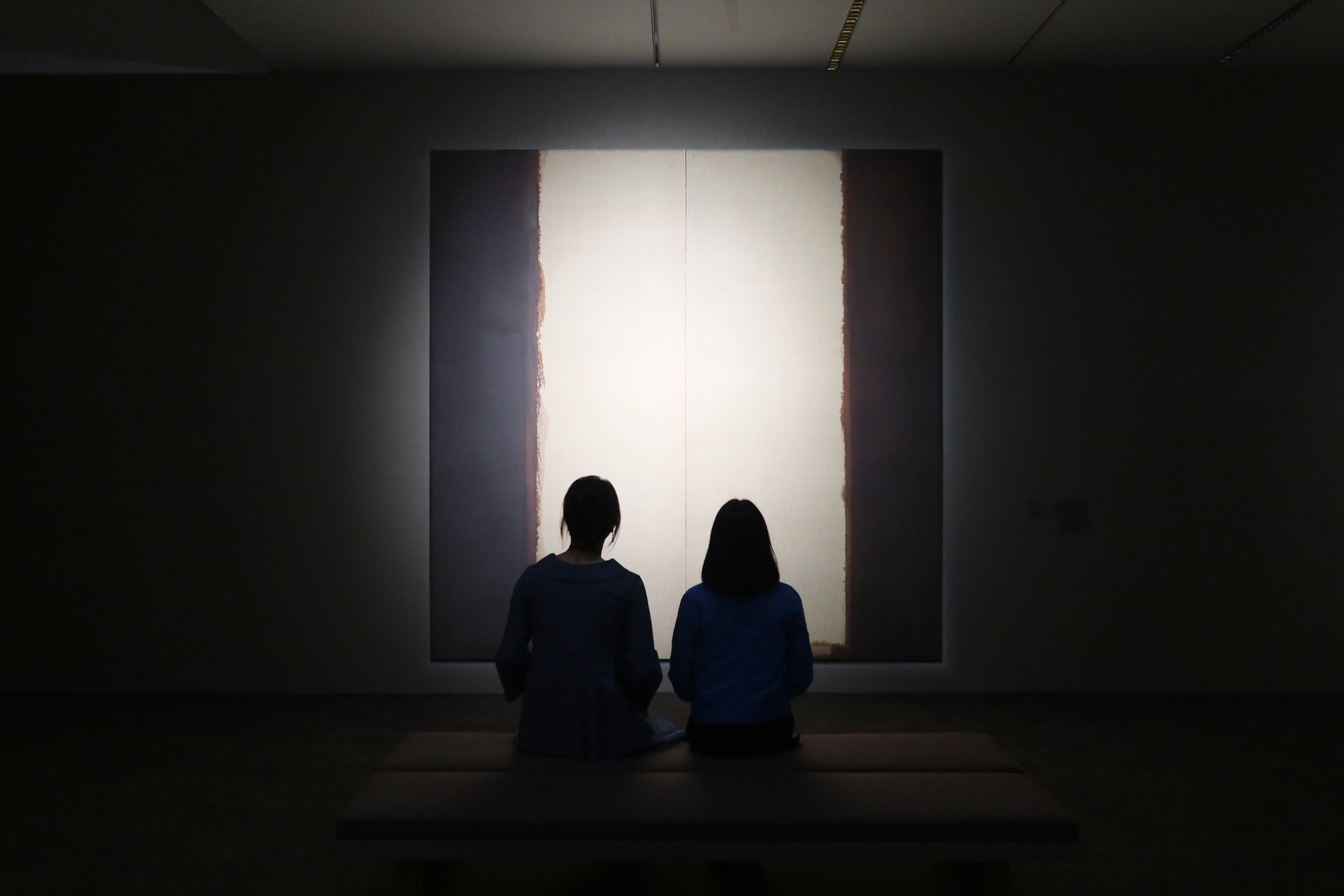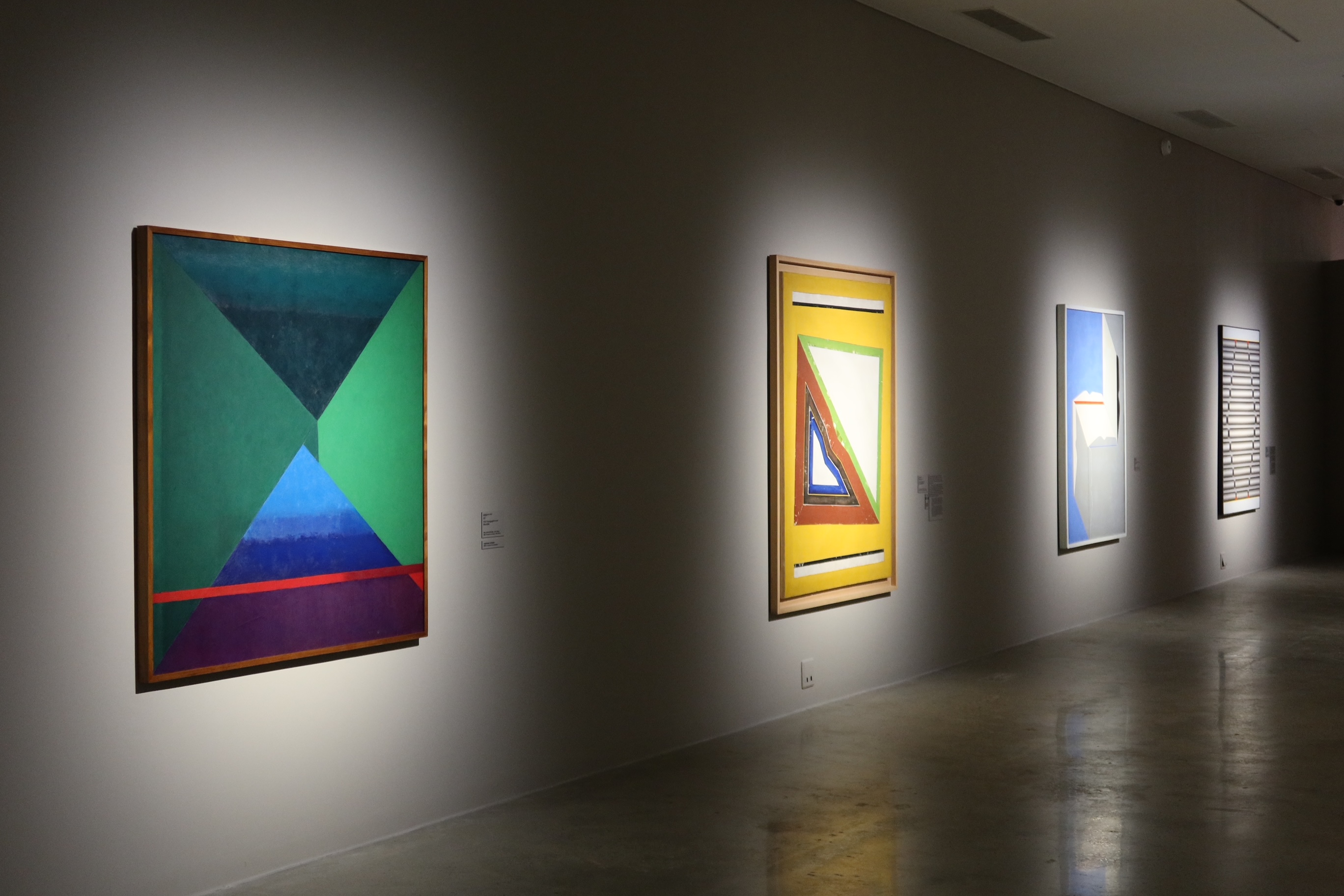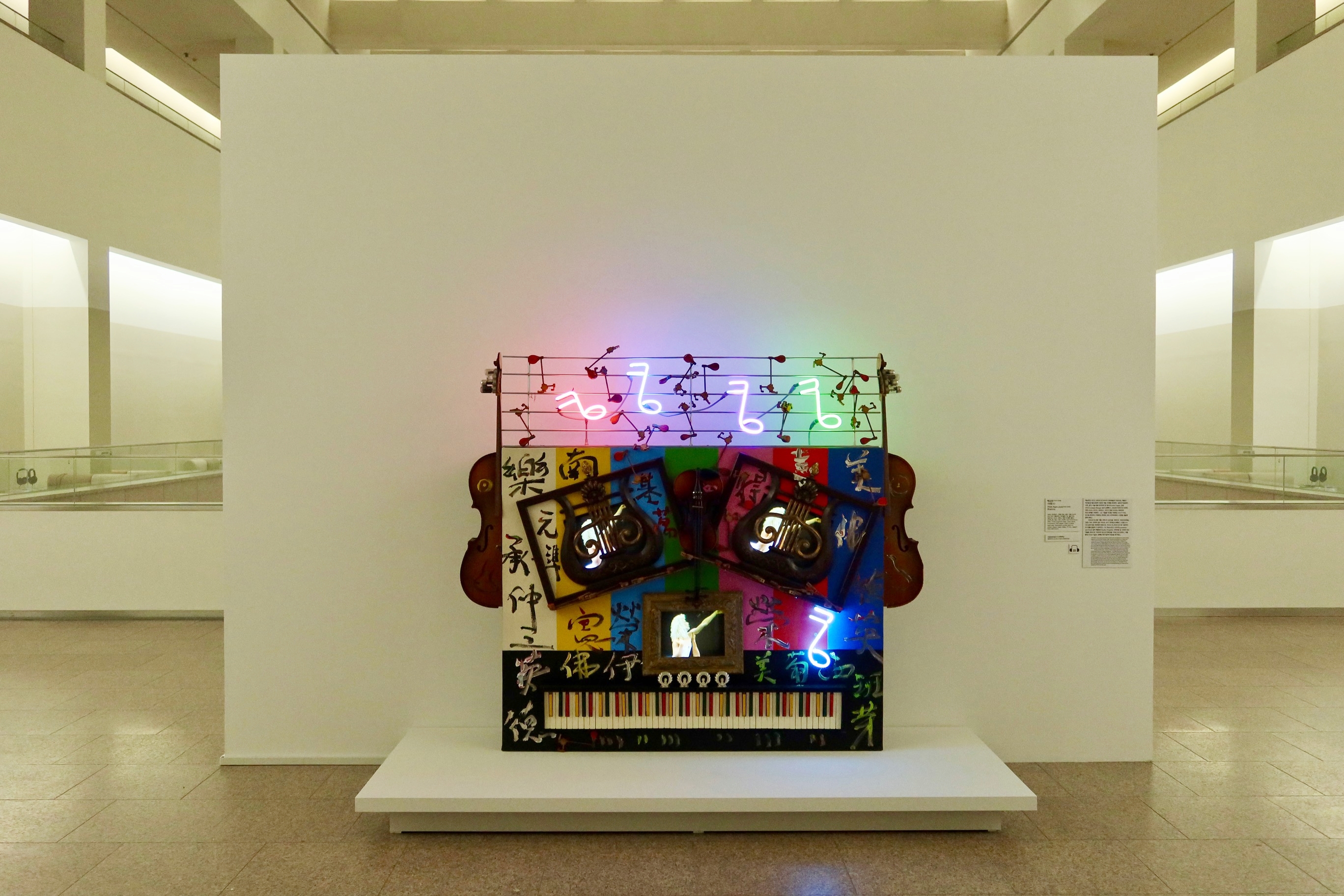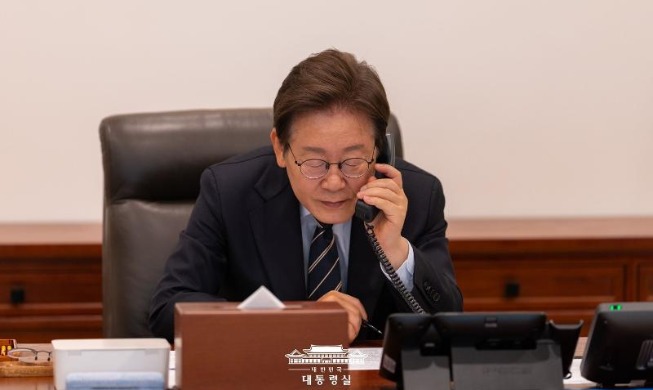
Reporters at a news conference on June 25 look at "Umber Blue 86-29" by Yun Hyong-keun on the day before the opening of the permanent exhibition "Korean Modern and Contemporary Art II" at the National Museum of Modern and Contemporary Art, Korea (MMCA) in Gwacheon, Gyeonggi-do Province.
By Charles Audouin
Photos = Charles Audouin
The National Museum of Modern and Contemporary Art, Korea (MMCA) branch in Gwacheon, Gyeonggi-do Province, on June 26 opened the permanent exhibition "Korean Modern and Contemporary Art II."
Featured at the display are about 110 works from the 1950s to 90s showing the trajectory of the country's contemporary art.
The exhibition's first section, "Korean Modern and Contemporary Art I," that debuted in May shows works from the Korean Empire period (1897-1910) to the Korean War (1950-53). Thus both parts provide a panoramic view of the country's contemporary art over the past 100 years.

Paintings at "Expansion of Abstract Art" section
The second part has 11 sub-themes showing the flow of such art since national industrialization and democratization after the launch of the government. Works from various genres by era and trend greet visitors ranging from those by award winners at the first National Art Exhibition in 1949 to pieces of modernism, informal and Korea's distinct abstract art.
Seventeen major works are from the collection of former Samsung Group Chairman Lee Kun-hee. Of these, the painting "A Clear Day" (1959) by Ahn Sangchul will be shipped in November to the Smithsonian Institution's National Museum of Asian Art in Washington, and "Modern History of Korea - Synthesis," a 2.59 m-tall painting by Shin Hakchul, in August next year will be sent to the British Museum in London.
The section "Artist's Room" covers works by a single artist. The room of Kim Whanki (1913-74) expand a visitor's sense of sight and smell thanks to fragrances inspired by his paintings.
That of Yun Hyong-keun (1928-2007) plays six songs composed by Jung Jae-il, the musical director of the movies "Okja" and "Parasite" and the hit Netflix series "Squid Game."

Kwak Duckju's "Self-Portrait 78" (1978)
"MMCA Collection: Korean Contemporary Art," the permanent exhibition of the MMCA Seoul, displays leading 86 works of domestic contemporary art. The museum said that since the first part of the display was opened in Seoul on May 1, it has attracted 110,000 visitors and the first part of the display in Gwacheon about 24,000.
"When the museum opened in 1969, it lacked even a single artwork but over the past 57 years, it has collected some 11,800 works thanks to many donors, artists and visitors," MMCA Director Kim Sunghee said. "The permanent exhibition is a meaningful venue in showcasing the 100-year history of Korean art through a collection that is the backbone and cornerstone of the museum."

"Brahms" (1993), a work by video installation pioneer Paik Nam June that features a prologue and finale, is by the entrance of the exhibition "Korean Modern and Contemporary Art II" at the National Museum of Modern and Contemporary Art, Korea (MMCA) in Gwacheon, Gyeonggi-do Province.
caudouin@korea.kr
